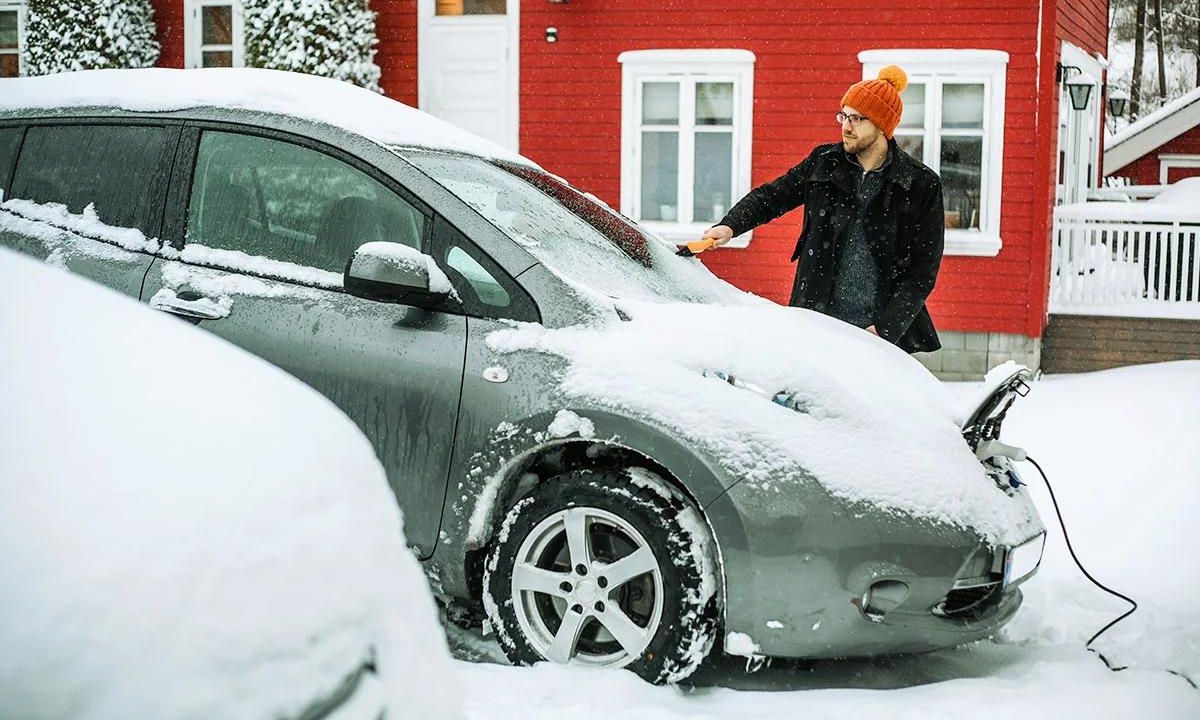With temperatures bottoming out across many countries, electric vehicle (EV) drivers are experiencing a significant drop in their driving range. EV owners need to realize the reasons why electric cars don’t go as far in the cold. The extreme winter weather at the start of the year has led to a noticeable impact on the battery life of EVs. Most EVs use lithium-ion batteries and they can get cranky in the cold weather.
This compels EV owners to get a deeper understanding of underlying reasons. Studies by AAA suggest that EVs function well in moderate weather. It also shows that freezing temperatures can substantially reduce the driving range of EVs. Let’s have a closer look at the complexities of using electric cars in cold weather and the measures to adapt EV technology for challenging conditions.
The Science Behind Reduced EV Range in Cold Weather
In cold weather, the efficiency of lithium-ion batteries, which power most EVs, is significantly compromised. The chemical processes within the battery slow down, affecting the overall performance. Batteries function through chemical reactions. Electrons and ions move from one side to the other side of the battery. When it’s cold, these chemical reactions taking place in the batteries slow down. Resulting in a drop in the driving range.
AAA (American Automobile Association) conducted a study on this. According to their findings, heat usage when it’s 20 degrees Fahrenheit outside adds about $25 more for every 1,000 miles when compared to the cost of driving at 75 degrees Fahrenheit. EV owners are challenged to keep their batteries charged through the winter. Furthermore, the increased energy demand for heating the cabin of an EV contributes to a considerable drop in driving range.
“The AAA research shows that electric vehicles thrive in more moderate climates. The reality is that most of us live in areas with extreme weather from time to time, so EV drivers need to know how hot and cold temperatures can impact their driving range.”
Marie Dodds, public affairs director for AAA
AAA’s study tested five electric vehicles. They all have a minimum EPA estimated driving range of 100 miles. The vehicles were a BMW i3, Chevrolet Bolt, Nissan Leaf, Tesla Model S 75D, and a Volkswagen e-Golf.
Practical Challenges for EV Owners in Winter
EV owners face practical challenges in winter, such as longer charging times and reduced battery efficiency. Anecdotal evidence from sources like Reddit highlights the real-world experiences of EV owners. Owners are struggling to maintain their driving range in extreme winter conditions.
Moreover, comparative analyses of different EV models have shown varying performances in cold weather. This gives insights into the practical challenges faced by each model. It is essential for EV owners to understand EV owners need to realize the reasons why electric cars don’t go as far in the cold, in order to face the challenge.
Prepare EV Technology for Cold Climates
Recent technological advancements are showing promise in mitigating the impact of cold weather on EVs. Highlighting the best EVs for cold weather and providing practical tips for EV owners to maximize range and battery life in winter can significantly contribute to addressing the challenges faced by users in such conditions.
The first thing is to make sure that your EV is fully charged. Your EV is going to need more charge than usual. Keep the vehicle fully charged whenever possible to make sure not to get stranded in the middle of nowhere. It will surely be more costly as you are using more electricity.
The use of regenerative braking will also help you to keep the range in winter driving. This is mainly because of the kinetic energy generated by braking to power your vehicle. Energy will not go to waste and it will help in extending the charge of your EV in the cold months. This can be a bit of a far-reaching option since not all EVs have regenerative braking.
It would also be a deal if you could switch on or pre-set the heating to come on at least 30 minutes prior to your departure and while the vehicle is still connected. You will be using the power supply from the grid and not from your battery. The car will not have to heat up from scratch. It will only have to maintain the temperature within the cabin. This will help you set off in the best possible conditions and lower energy consumption.

Best EVs in Cold Weather
Ongoing research and developments in improving EV battery technology for cold climates are essential to enhance the usability of EVs in winter. U.S. News & World Report has given 12 EVs that are best for winter driving. Each of these 12 vehicles apparently comes with equipment and features crucial for the driving range in winter. Global perspectives and market trends in EV sales in regions with cold climates are considered in the making of the list.
2023 Nissan Ariya, 2023 Hyundai Ioniq 5, 2023 Volkswagen ID.4, 2023 Tesla Model 3, 2023 Ford Mustang Mach-E, 2023 Rivian R1T, 2023 Kia EV6, 2023 Mercedes-Benz EQE SUV, 2023 Lucid Air, 2023 Ford F-150 Lightning, 2023 BMW i4, and 2024 Audi Q8 e-tron are some of the EVs that top the list according to sources.
Most of these vehicles incorporate heated steering wheels and seats along with other exquisite features. This feature consumes less energy than a traditional cabin heating system.

Conclusion
The impact of cold weather on EVs poses significant challenges for both manufacturers and users. Addressing the complexities of using electric cars in cold weather requires a comprehensive understanding of the underlying science and practical challenges. It’s important for EV owners to realize the reasons why electric cars don’t go as far in the cold. The evolving nature of EV technology and its growing adaptability to diverse climatic conditions presents a promising path forward for the effective use of electric vehicles in cold weather.
This comprehensive approach to understanding and addressing the impact of cold weather on electric vehicles provides valuable insights for individuals, researchers, and industry professionals navigating the challenges of using EVs in winter.
Also read,







